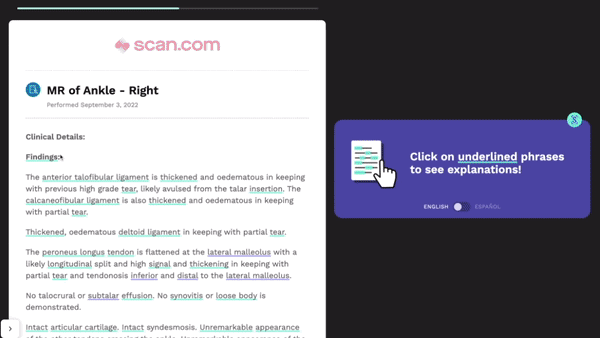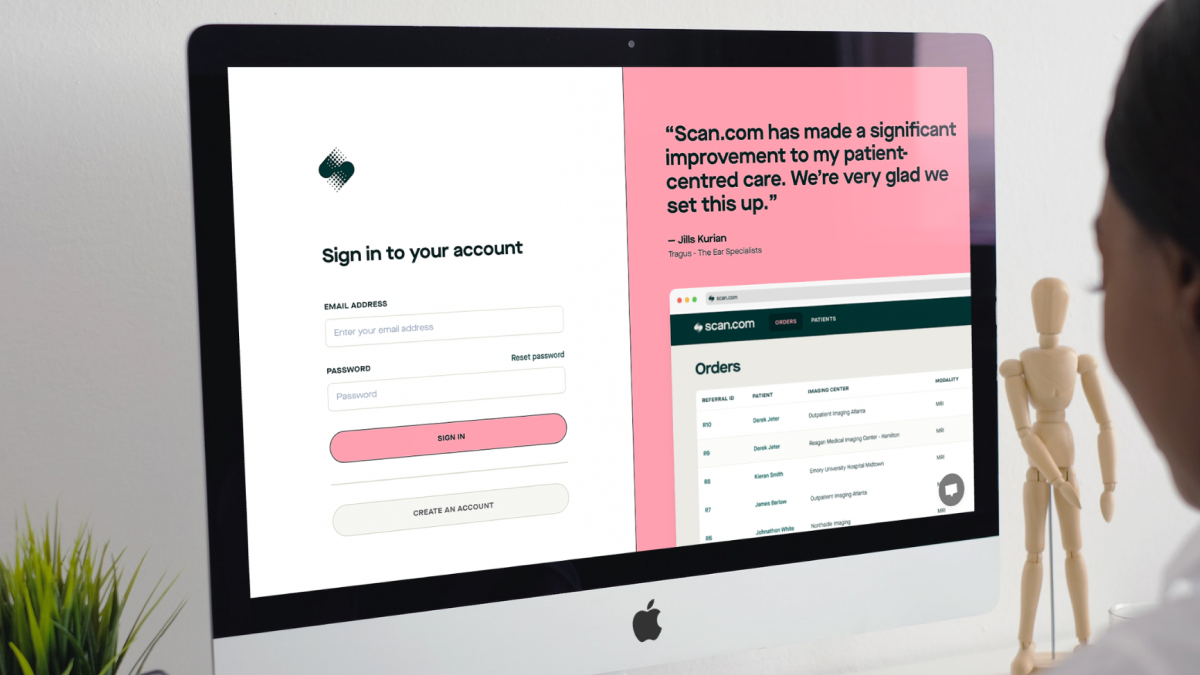Anyone in the U.K. who has tried to book an NHS medical appointment of late will know just how much of an ordeal it can be, with median waiting times for consultant-led elective care (i.e. pre-planned clinical treatment) currently sitting at around 14.6 weeks in England. This has led to a spike in people turning to the private medical sector, a trend some argue heralds the start of a two-tier healthcare system where those with financial means effectively pay to fast-track their treatment.
In tandem, a floundering public healthcare system has created fertile ground for healthtech startups to flourish, addressing everything from staffing shortages to improving radiologists’ tech stack.
One such company is Scan.com, a London-based medical imaging startup that connects patients with scanning centers, covering MRI, ultrasound, CT, and X-ray. The company today announced it has raised $12 million in a Series A round of funding, as it looks to build on its recent U.S. launch.
Waiting times
The problem, according to Scan.com, is that even if a patient is able to book a doctor’s appointment in the first place (a procedure that is becoming increasingly difficult in itself in the U.K.), the subsequent referral process to get an appropriate scan can take several months, after which they may have to wait even longer to receive the results.
Scan.com has partnered with hundreds of scanning centers to enable individuals to access medical imaging services with or without a GP’s referral, with user-friendly reports replete with clickable diagrams delivered within a week.

Scan.com report Image Credits: Scan.com
To use Scan.com’s online referral system, users pay up-front to secure their scan, and then they are booked in for a virtual consultation with a clinician within 48 hours.
Prices vary based on a number of factors such as location and the type of scan required, but rough ball-park figures run anywhere from £180 to £395 or more, and includes the consultation, the scan, and all the follow-on reports.
If a scan identifies a serious problem, the patient enters Scan.com’s “urgent findings pathway,” where a clinical team contacts the patient and their doctor to explain the results and offer guidance on what to do next.
But the ability to bypass a GP (general practitioner) and self-refer for a medical scan surely could lead to all manner of time-wasting endeavors — what if a patient doesn’t actually need a scan?
“Our clinical team offers consultations and guidance to all patients once they’ve booked, which is a core part of the service we offer,” Scan.com CEO Charlie Bullock explained to TechCrunch. “Their time is included in our scan pricing, which is why we take payment at the point of booking. During the consultation, the clinician can amend the scan type, add or amend body parts, and ensure the scan is both safe and medically justified for the patient’s needs.”
Bullock added that if the clinician determines that there is no justification for the scan, Scan.com refunds the full cost and provides guidance on what the patient should do next. “This happens in around 3% of cases,” Bullock said.
But most patients who are at the stage of thinking about scans are likely to have had some medical assessments already that suggest some a scan might be needed to get to the root of their problems, and a large chunk of the target user-base are simply looking to circumvent the lengthy waiting times currently encumbering the NHS.
“Patients may choose to self-refer for imaging for a variety of reasons, but one of the core factors is speed,” Bullock said. “Some patients may have already seen a GP, physiotherapist, or other healthcare provider, but have reached a bottleneck in their healthcare pathway due to long waiting times. They may know what scan they need, and in many cases have been informed of the waiting time, and they choose to come to us to access the next steps faster.”

Scan.com: Simple referrals Image Credits: Scan.com
In truth, there are numerous scenarios that may require a service such as that provided by Scan.com. Some people might have general concerns and want a preventative screening without taking up the time of a primary healthcare provider, and Scan.com offers full-body MRI scans for such cases.
“Family history or lifestyle factors that could lead to disease can be investigated and checked in this way,” Bullock said.
Also, more than 10,000 women under the age of 50 are diagnosed with breast cancer in the U.K. each year, while the country’s national screening program only starts from the age of 50. As such, Scan.com is gearing up to launch early mammogram screenings later this year targeting women under the age of 50 specifically.
“We aim to fill that gap to speed up access to treatment,” Bullock added.
The story so far

Scan.com’s team of 30 Image Credits: Scan.com
Scan.com was founded some five years ago by clinicians Khalid Latief and Jasper Nissim who had grown exasperated by “inefficiencies” in organizing diagnostics for their patients. Launching initially as a side-project, the duo brought on board CEO Charlie Bullock, COO Oliver Knight, and front-end designer Joe Daniels as co-founders in 2019, bootstrapping their way through to 2021 before going full-time and raising some £4.2 million ($5.2 million) in seed funding from investors including Monzo co-founder Tom Blomfield.
Today, Scan.com claims around 30 employees across the U.K. and U.S., having launched its product Stateside two months ago.
“We ramped up to $1 million in annualised revenue in the first five weeks in the U.S. following this launch,” Bullock said.
So far, Scan.com has been piloting its service in Georgia, and the company is looking to expand to five more states to “cement ourselves as the leading diagnostic imaging platform in the U.S.,” Bullock said. “We also know there is significant opportunity within Europe, but with language barriers and more varied healthcare systems, our focus is the U.S. and U.K. for the time being.”
With another $12 million in the bank, Scan.com is well-financed to continue its U.S. expansion and also extend its service offering to include the likes of DEXA scans, echocardiograms, and the aforementioned mammograms, while also pursuing enterprise contracts across digital health providers, employee benefit platforms, among other industry organizations.
“Medical imaging covers such a variety of modalities that our focus is to launch as many of these as we can,” Bullock said. “Alongside scans, we also want to design pathways to add value for our patients, such as guided injections for pain relief, or adding in-vitro testing and pathology solutions to our preventative screenings to make them more comprehensive.”
Scan.com’s Series A round was co-led by Oxford Capital, Aviva Ventures, YZR Capital, Triple Point Ventures and Simplyhealth Ventures, with participation from Forefront Venture Partners.
Scan.com, which gives patients direct access to private medical imaging services, raises $12M by Paul Sawers originally published on TechCrunch
from TechCrunch https://ift.tt/7JSYRa6
via IFTTT
Comments
Post a Comment